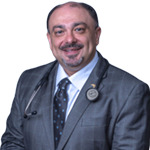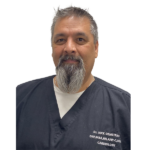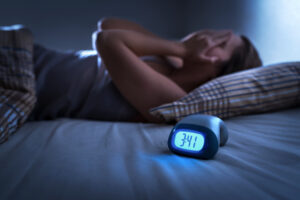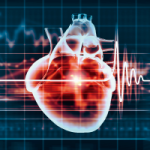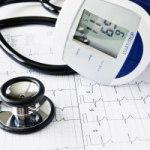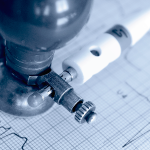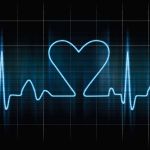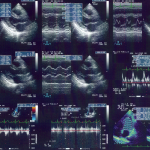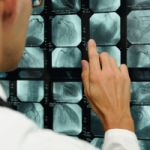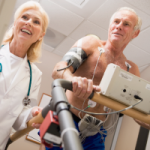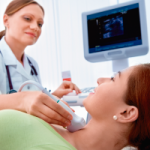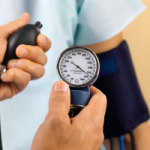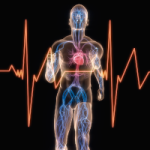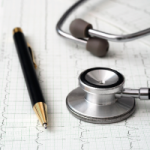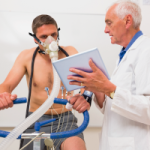
Cardiologists at Heart & Health Medical, are dedicated to your heart health. Our team of Board-Certified cardiologists combines expertise with a patient-centered approach to provide you with the best in cardiology care.
Cutting-Edge Cardiology Services
Our state-of-the-art facility is equipped with the latest technologies and methods for evaluating and diagnosing heart diseases non-invasively. We cover a wide spectrum of cardiac conditions and diseases, from coronary artery disease to cardiomyopathy and arrhythmia.
Focus on Prevention and Early Detection
We believe in proactive care. That’s why we emphasize non-invasive cardiology, early detection, and prevention of heart diseases. Our comprehensive services include metabolic testing, peripheral vascular disease testing, pacemaker and defibrillator monitoring, and advanced imaging techniques like echocardiography and stress echo testing.
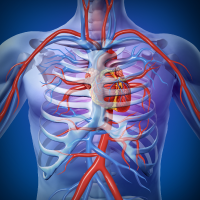
Patient-Centric Approach
At Heart & Health Medical, you’re not just a patient; you’re a valued individual. Our Cardiology and Vascular Medicine Team takes the time to listen to you, discuss your medical concerns, explain diagnoses, and explore treatment options. Your family is part of the conversation, ensuring you have all the information you need to make informed decisions about your heart health.
Expertise and Ongoing Training
Our team of physicians are leaders in their field. They hold specialized certifications and undergo continuous training for complex procedures. You can trust that you’re in the hands of experts who are passionate about your well-being.
Comprehensive Cardiology Services
We offer a wide range of non-invasive cardiology services to residents across Long Island, including early prevention screenings, cardio and vascular disease detection packages, metabolic testing, peripheral vascular disease testing, and advanced imaging such as Transesophageal Echocardiography (TEE).
Accessible Locations
With four convenient locations in Babylon, Massapequa, Coram, and Plainview, Heart & Health Medical is committed to serving Nassau County and Suffolk County residents. We’re here to provide you with timely, accessible care for your cardiac and vascular needs.
Don’t Wait – Seek Care Today
If you’re at risk or experiencing symptoms of cardiac or vascular conditions, don’t hesitate to seek medical attention. Shortness of breath or chest pain could be signs of serious issues, and we’re here to help.
Your heart health matters, and at Heart & Health Medical, we’re dedicated to ensuring you lead a healthy life. Contact us today to schedule an appointment and take the first step toward a healthier heart.
Heart & Health Medical has four Long Island, New York locations in Babylon, Massapequa, Coram, and Plainview. Providing convenient medical service to residents of Nassau County and Suffolk County, New York.
Cardiology Team of Heart and Health Medical
Heart Care Specialists
Cardiovascular Conditions & Disease
- Family history
- Smoking
- Obesity
- Aging
- Diabetes
- High blood pressure
- Physical inactivity
- High cholesterol
- Gender (males are at an increased risk)
- Elevated C-reactive protein
- Angina (Chest Pain)
- Coronary Artery Disease
- Heart Attack
- Heart Valve Disease
- Pulmonary heart disease – Pulmonary hypertension
- Atherosclerosis
- Congestive heart failure
- Pericarditis
- Heart murmurs
- Patent foramen ovale (PFO)
- Hypertensive heart disease
- Ischemic heart disease – Ischemic cardiomyopathy
- Atrial septal defect (ASD)
- Hypertrophic cardiomyopathy (HCM/ HOCM)
- Cholesterol
- Congenital heart diseases
- Atrial myxoma
- High blood pressure
- Endocarditis
- Cardiomyopathy
- Atherosclerosis
- Mitral Valve Prolapse
- Abnormal heartbeats that feel fluttering, pounding, or rapid.
- Angina – chest pain
- Chest discomfort or chest pain
- Dizziness
- Fainting or near fainting
- Fatigue
- Fever
- Getting out of breath (breathlessness) while at rest or with exertion
- Heart rhythm changes
- Lightheadedness
- Numbness, pain, coldness, or weakness in your arms or legs.
- Pain occurring in the jaw, back, neck, throat, or upper abdomen
- Persistent or dry cough
- Racing heartbeat
- Shortness of breath
- Slow heartbeat
- Swollen ankles, legs, and feet
- Unusual spots or skin rashes
Cardiology Articles
First Response: What to Do in a Cardiac Emergency
First Response: What to Do in a Cardiac Emergency In...
Read MoreWarning Signs: Symptoms of Heart Conditions
Warning Signs: Symptoms of Heart Conditions The heart, a symbol...
Read MoreSleep and Heart Health: Connecting the Dots
Sleep and Heart Health: Connecting the Dots Importance of Sleep...
Read MoreFind A Cardiologist Near Me
Non-Invasive Cardiology Services
An electrophysiology study (EPS) is like a deep dive into the intricate wiring of your heart. It’s a specialized test that allows us to assess the health and functionality of your heart’s electrical system.
An echocardiogram stress test, often referred to as a heart stress test, is like a dynamic performance review for your heart. It’s a specialized examination that allows us to witness how your heart muscle responds to exercise compared to its resting state.
A Holter monitor is like a loyal companion for your heart, always on watch to detect and record any irregularities in your heart rhythm. It’s a small but powerful device that plays a crucial role in assessing your heart’s health, especially when you’re experiencing symptoms like chest pain or palpitations.
Electrical cardioversion is like a reset button for your heart when it’s dancing to an irregular beat. It’s a safe and effective procedure used to restore a normal heart rhythm in individuals experiencing arrhythmias or irregular heartbeats.
Cardiac catheterization is like a guided tour of your heart’s inner workings, a journey that allows us to explore, diagnose, and sometimes even treat various heart conditions. It’s a remarkable procedure that offers critical insights into your heart’s health.
The 64 slice CT angiogram is like a high-definition camera for your arteries, offering unprecedented clarity and precision in the diagnosis of arterial blockages. It’s a cutting-edge imaging technique that revolutionizes the way we assess your vascular health.
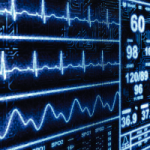
Wired & Wireless Event Monitoring
Event monitoring, whether wired or wireless, is like having a vigilant guardian for your heart’s rhythm. It’s a specialized service that allows us to continuously track your heart’s electrical activity, capturing valuable data to diagnose and manage heart rhythm disorders.
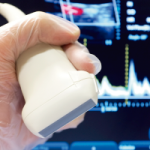
A transthoracic echocardiogram (TTE) is like a magical window into your heart’s inner workings, creating a captivating visual symphony of your heart’s movements. This noninvasive procedure is a go-to choice for gaining valuable insights into your heart’s health.

Anticoagulation monitoring is like having a vigilant guardian for your blood, ensuring it flows smoothly and coagulates appropriately. This essential service is designed to keep a close watch on the effects of anticoagulant medications, which prevent blood clot formation.
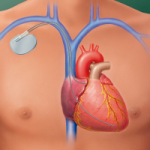
Pacemaker & Defibrillator Monitoring
Portable heart rhythm monitoring is like having a silent guardian for your heart, always vigilant and ready to record its every beat. This ingenious device offers continuous surveillance, helping us detect arrhythmias and other heart conditions that may go unnoticed.
Imagine a captivating collaboration between an EKG machine and a CT scanner, where electrode pads delicately placed on your chest and the keen eye of the CT scanner work in unison to unveil the intricate tale of your heart’s electrical rhythm while capturing strategic snapshots of your chest. This ingenious partnership brings together the science of electrocardiography (EKG) and the art of imaging, offering a holistic view of your heart’s inner workings.
Picture a dynamic assessment where your heart takes center stage, responding to exertion like a seasoned performer. This performance, known as the Stress ECG Test, goes by many names – exercise electrocardiogram, treadmill test, graded exercise test – but its purpose remains the same: to reveal how your heart behaves under the spotlight of physical activity.
The Carotid Duplex Ultrasound is a refined imaging procedure designed to meticulously assess the condition of your carotid arteries. These essential blood vessels in your neck play a critical role in supplying blood to your brain. This procedure employs high-frequency sound waves, known as ultrasound, to provide a detailed visualization of the carotid arteries, aiding in the detection of narrowing and potential blockages.
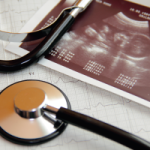
Transesophageal Echocardiography (TEE)
The Transesophageal Echocardiogram, often abbreviated as TEE, is a highly precise diagnostic procedure that utilizes echocardiography to capture detailed images of your heart and arteries. This advanced imaging technique is instrumental in evaluating cardiac function and assessing the overall performance of the heart.
The Ankle-Brachial Index (ABI) test stands as a straightforward yet insightful method employed by healthcare professionals to gauge the efficiency of blood flow throughout your body. This non-invasive procedure provides valuable insights into the circulatory health of your extremities, aiding in the assessment of potential vascular issues.
The realm of peripheral vascular tests serves as a crucial investigative tool, shedding light on the presence of significant blood clots within a patient’s arteries or veins. These tests, carefully designed to explore the intricate pathways of our circulatory system, hold paramount importance in the evaluation of vascular health.
The T-Wave Alternans test, a diagnostic procedure designed to provide profound insights into cardiac health, calls for a strategic approach. Similar to a stress test, it requires the temporary elevation of your heart rate to unveil essential cardiac patterns. The procedure involves the precise application of electrodes to your chest and back, connected to a specialized T-Wave Alternans machine through a wire.
Metabolic tests, a diagnostic approach that delves into the intricate world of caloric combustion, play a pivotal role in the assessment of metabolic health. These tests are instrumental in measuring the rate at which your body burns calories, thereby enabling healthcare professionals to identify subtle indications of metabolic imbalances.
The echocardiogram, a vital diagnostic tool embraced by physicians and cardiologists, unfolds as a masterpiece of medical imaging. This technique harnesses the power of sound waves to craft intricate images of the heart, providing invaluable insights into cardiac health.


